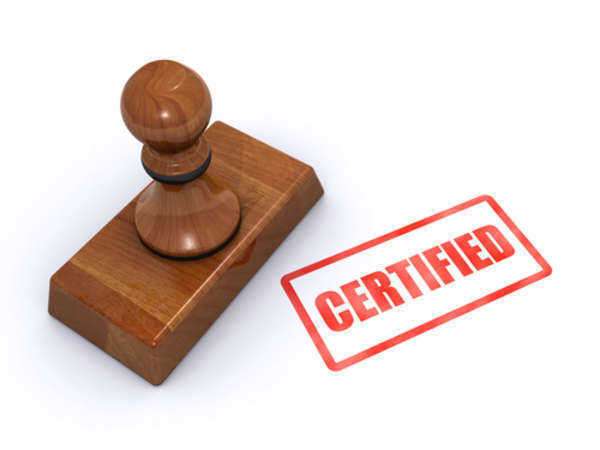
Introduction
In the world of real estate, encumbrances and licenses are important legal concepts that can affect the ownership and use of a property. An encumbrance is a claim against a property that can limit its use or transfer, while a license is a permission to use a property for a particular purpose. Encumbrances and licenses can arise from various sources, such as mortgages, liens, easements, zoning regulations, and contracts. It is important for buyers, sellers, and lenders to understand the nature and implications of encumbrances and licenses before engaging in any transaction involving real estate.
In this article, we will explore some interesting facts about encumbrances and licenses, including their types, characteristics, effects, and legal remedies. We will also provide some updates on recent developments and regulations related to encumbrances and licenses, based on government resources.
Types of Encumbrances
Encumbrances come in many forms, each with its own set of legal rights and restrictions. Some of the most common types of encumbrances are:
1. Mortgages – A mortgage is a type of loan secured by a property as collateral. When a borrower defaults on a mortgage, the lender can foreclose on the property and seek to recover the outstanding debt by selling it. Mortgages are usually recorded as encumbrances on the title of the property, indicating the existence of a lien.
2. Liens – A lien is a legal claim against a property that arises from a debt or obligation owed by the owner. Liens can be filed by a variety of creditors, such as contractors, suppliers, tax collectors, or judgment holders. Liens can prevent the transfer or refinancing of a property until the debt is paid or discharged.
3. Easements – An easement is a right to use or access a portion of a property for a specific purpose, such as a driveway, a utility line, or a pedestrian path. Easements can be created by agreement between the parties or by operation of law, such as by prescription or necessity. Easements can limit the owner’s ability to use or alter the affected portion of the property.
4. Restrictions – A restriction is a limitation on the use or development of a property imposed by a zoning ordinance, a covenant, or a deed. Restrictions can include setbacks, height limits, design standards, use restrictions, or environmental requirements. Restrictions can affect the value and marketability of a property.
5. Covenants – A covenant is a promise or agreement between parties regarding the use or development of a property. Covenants can be created by contract, deed, or other legal instrument, and can include obligations to maintain the property, pay fees, or abide by certain conditions. Covenants can run with the land and bind subsequent owners.
Each of these types of encumbrances has different legal effects and remedies, depending on the nature and circumstances of the matter. Some encumbrances may be voluntary, such as mortgages or easements, while others may be involuntary, such as liens or restrictions. Some encumbrances may be temporary, such as leases or licenses, while others may be permanent, such as covenants or easements. Before entering into any transaction involving real estate, it is important to conduct a thorough title search and due diligence to identify any encumbrances that may affect the property.
Types of Licenses
A license is a permission or authorization to use a property for a specific purpose or period of time. A license can arise from a variety of sources, such as contracts, permits, or government regulations. Unlike an easement or a covenant, a license does not create an interest in the property itself, but rather a personal right to use it. Licenses can be revoked or terminated by the licensor at any time, subject to any contractual or statutory limitations.
Some examples of licenses are:
1. Business licenses – A business license is a permit or authorization issued by the government to operate a business in a particular location or industry. Business licenses can include zoning permits, health licenses, tax licenses, or professional licenses, depending on the nature and scope of the business.
2. Land use permits – A land use permit is a permission or authorization issued by the government to use a property for a specific purpose or development. Land use permits can include building permits, environmental permits, or variances, depending on the zoning and regulatory requirements of the jurisdiction.
3. Leases – A lease is a contract between the owner of a property (landlord) and a tenant, granting the tenant the right to use and occupy the property for a period of time in exchange for rent payments. Leases can include a variety of provisions, such as rent escalation, renewal options, maintenance obligations, or subletting restrictions.
4. Access agreements – An access agreement is a permission or authorization granted by the owner of a property to allow someone else to use or cross the property for a specific purpose, such as a right of way, a driveway, or a parking area.
5. Other licenses – Other types of licenses may include hunting or fishing licenses, event permits, entertainment licenses, or intellectual property licenses, depending on the needs and requirements of the parties.
Each type of license may have different conditions and limitations, depending on the nature and purpose of the license. Some licenses may be granted for a one-time event or activity, while others may be renewable or ongoing. Some licenses may require approval or review by governmental agencies, while others may be purely contractual. Before obtaining or granting any license, it is important to review the terms and conditions of the license and ensure compliance with any legal or regulatory requirements.
Effects of Encumbrances on Real Estate Transactions
Encumbrances can have significant effects on real estate transactions, such as sales, purchases, refinances, or leases. Depending on the type and extent of the encumbrance, the transaction may be delayed, canceled, or renegotiated. Some common effects of encumbrances are:
1. Impaired title – A title with encumbrances may be impaired, meaning that the buyer may not have clear and marketable title to the property. This can affect the buyer’s ability to obtain financing, sell the property, or obtain title insurance. Title defects can be cured by a variety of means, such as paying off liens, removing restrictions, or obtaining waivers.
2. Reduced value – A property with encumbrances may have a reduced value, meaning that the seller may not be able to sell the property for the full market price. This can affect the seller’s ability to pay off mortgages, settle debts, or obtain cash proceeds. Reduced value can be mitigated by disclosing the encumbrances to the buyer, negotiating a lower price, or obtaining a release or satisfaction of liens.
3. Increased risk – A property with encumbrances may have increased risk, meaning that the buyer or lender may face potential liabilities or disputes related to the encumbrances. This can affect the buyer’s or lender’s ability to invest or finance the property, as well as their legal exposure. Increased risk can be managed by conducting thorough due diligence, obtaining expert advice, or obtaining indemnification or insurance.
4. Limited use – A property with encumbrances may have limited use, meaning that the owner may not be able to develop or use the property as desired. This can affect the owner’s ability to generate income, pursue a business, or enjoy the property. Limited use can be addressed by negotiating with the affected parties, obtaining waivers or releases, or seeking to modify or remove the encumbrances.
5. Protracted negotiations – A property with encumbrances may require protracted negotiations and approvals from multiple parties, such as lien holders, easement holders, or government agencies. This can affect the timing, cost, and outcome of the transaction, as well as the willingness of the parties to proceed. Protracted negotiations can be expedited by providing clear and accurate information, obtaining expert advice, or using alternative dispute resolution methods.
Legal Remedies for Encumbrances and Licenses
Encumbrances and licenses can be resolved by a variety of legal remedies, depending on the nature and extent of the matter. Some legal remedies for encumbrances include:
1. Paying off the debt – If the encumbrance arises from a debt, such as a mortgage or a lien, the debt can be paid off by the owner or a third party to release the lien or mortgage. Paying off the debt can involve negotiating with the lender or creditor, obtaining financing, or using asset sales or liquidations.
2. Obtaining a release or discharge – If the encumbrance arises from a judgment or a lien, the owner can obtain a release or discharge from the creditor or judgment holder, either by paying off the debt or by obtaining a court order. Obtaining a release or discharge can involve negotiating with the creditor or judgment holder, filing a motion with the court, or obtaining legal representation.
3. Modifying or removing the encumbrance – If the encumbrance arises from a restriction, an easement, or a covenant, the owner can seek to modify or remove it by agreement with the affected parties or by a court order. Modifying or removing the encumbrance can involve drafting a new agreement, obtaining consent or waivers from the affected parties, or filing a petition or lawsuit with the court.
4. Asserting legal defenses – If the encumbrance arises from a defective title, such as a forged deed or a fraudulent lien, the owner can assert legal defenses to the validity or enforceability of the encumbrance. Legal defenses can involve conducting a title search, obtaining a judicial declaration, or filing a lawsuit for quiet title.
5. Obtaining insurance or indemnification – If the encumbrance poses a financial or legal risk to the owner, the owner can obtain insurance or indemnification to protect against potential losses or liabilities. Obtaining insurance or indemnification can involve shopping for policies, reviewing the terms and conditions, or negotiating with the insurance company.
Similarly, licenses can be resolved by a variety of legal remedies, depending on the nature and extent of the matter. Some legal remedies for licenses include:
1. Terminating or revoking the license – If the license is no longer needed or desired, the licensor can terminate or revoke it by giving notice to the licensee, subject to any contractual or statutory limitations. Terminating or revoking the license can involve negotiating with the licensee, providing alternative arrangements, or seeking court approval.
2. Modifying or renewing the license – If the license needs to be modified or renewed, the parties can negotiate new terms or conditions, subject to any legal or regulatory requirements. Modifying or renewing the license can involve drafting a new agreement, obtaining approvals or permits, or seeking legal advice.
3. Challenging the license – If the license is invalid or illegal, the licensor or a third party can challenge its validity or enforceability by a petition or lawsuit, seeking to revoke, modify, or clarify its scope. Challenging the license can involve collecting evidence, researching legal precedents, or retaining legal counsel.
4. Complying with the license – If the license imposes obligations or requirements on the licensee, the licensee must comply with them, subject to any legal or statutory limitations. Complying with the license can involve obtaining permits or approvals, paying fees or taxes, or submitting reports or inspections.
5. Defending against claims related to the license – If the license gives rise to disputes or claims by third parties, the licensee may need to defend against them, either by negotiating a settlement or by going to court. Defending against claims can involve evaluating the legal merits of the claims, gathering evidence and witnesses, or retaining legal representation.
Recent Developments and Regulations
Encumbrances and licenses are subject to various laws and regulations enacted by federal, state, and local governments, depending on the jurisdiction and the nature of the matter. Some recent developments and regulations related to encumbrances and licenses include:
1. COVID-19 regulations – The COVID-19 pandemic has affected the real estate industry in many ways, including the imposition of temporary or permanent regulations related to foreclosures, evictions, permits, zoning, and occupancy. These regulations may affect the validity or enforceability of existing encumbrances and licenses, as well as the ability of parties to negotiate or execute new transactions.
2. Privacy regulations – The recent trend towards stricter privacy regulations, such as the California Consumer Privacy Act (CCPA) and the General Data Protection Regulation (GDPR), may affect the disclosure and use of personal information related to real estate transactions, including encumbrances and licenses. These regulations may affect the ability of parties to obtain, use, or share personal information for marketing, due diligence, or other purposes.
3. Environmental regulations – The increasing awareness and concern about environmental issues, such as climate change, pollution, and sustainability, may affect the development and use of real estate, including the granting and enforcement of easements, covenants, and licenses. These regulations may affect the ability of parties to encumber or license properties that have environmental risks or impacts, as well as the liability and disclosure requirements related to such encumbrances and licenses.
4. Technology innovations – The rapid advances in technology, such as blockchain, artificial intelligence, and smart contracts, may affect the way encumbrances and licenses are created, recorded, and enforced. These innovations may offer new opportunities and challenges for parties to create, transfer, or terminate encumbrances and licenses, as well as for the legal and regulatory frameworks that govern them.
Conclusion
Encumbrances and licenses are important legal concepts that can affect the ownership and use of real estate. Understanding the nature and implications of encumbrances and licenses is crucial for buyers, sellers, and lenders who engage in transactions involving real estate. By identifying and resolving encumbrances and licenses, parties can reduce the risks, costs, and delays associated with real estate transactions. By staying updated with the recent developments and regulations related to encumbrances and licenses, parties can anticipate and adapt to the evolving legal landscape of real estate.
Licenses, although similar to easements, differ greatly from such a scenario, based on function and obtainment. This is because licenses do not grant an interest over a property, but merely a permission to perform a certain action on that property. A license is the allowance of a specific act, or group of acts, on a property belonging to someone else. Licenses can be obtained in many ways, and simply grant authority to an individual over a countering land.
Licenses may be granted either in writing, or verbally by both parties. A verbal agreement from a property owner, to the person that will use it for a specific act, is enough to grant them a license. In this case, the license can exist until the owner wishes, and he or she can withdraw it at anytime. Once the license has been withdrawn by the property verbally, then the person may no longer use the land or can be seen as a trespasser.
If a license is documented in writing, and there has been some sort of compensation by the user to the land owner, then that license is permanent and cannot be revoked. Once a license is created, the terms pertaining to that license are stringent and not flexible in any way. The person that has been given the license, the licensee, cannot try to change any varying factors in the license or its terms.
There is a type of license known as an implied license, given to people in the form of instructions on signs, ads, etc.. For example stores, restaurants, malls, they provide people entering their places a license to enter and view their merchandise as well as to purchase it. Their invitation to such actions in the form of “sale” signs, and objects of that nature serves as an implied license for the shopper. Also, stores that post the “Come on In, We’re Open” signs on the door invite those outside of it to enter and shop or eat at their establishment through an implied license.
Implied licenses may be revoked at any time, and once this has happened, the person that is found to be on the property without a license any longer, is accountable for their actions. They can be charged for trespassing without the right or license to do so, and can be prosecuted under law.
























